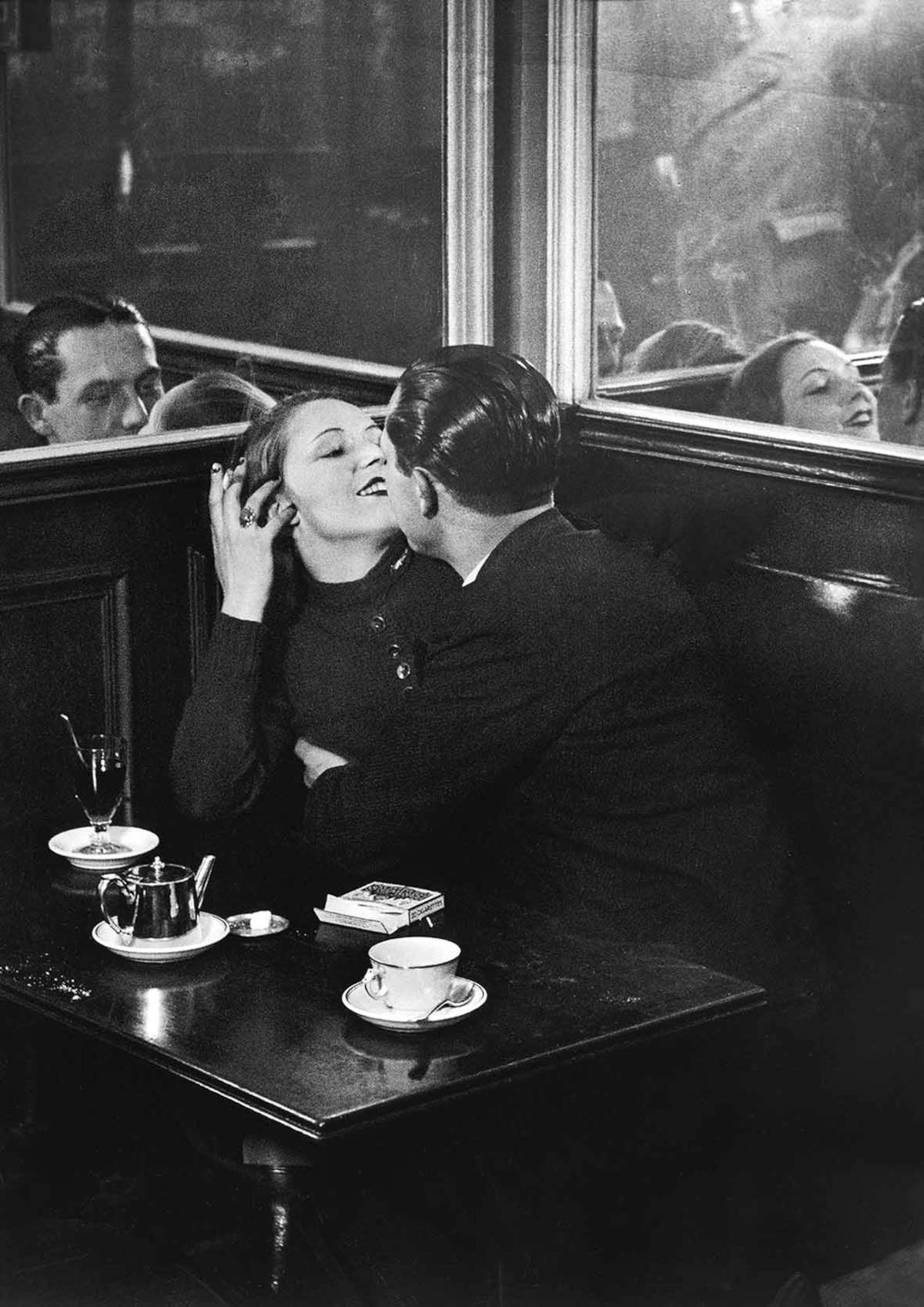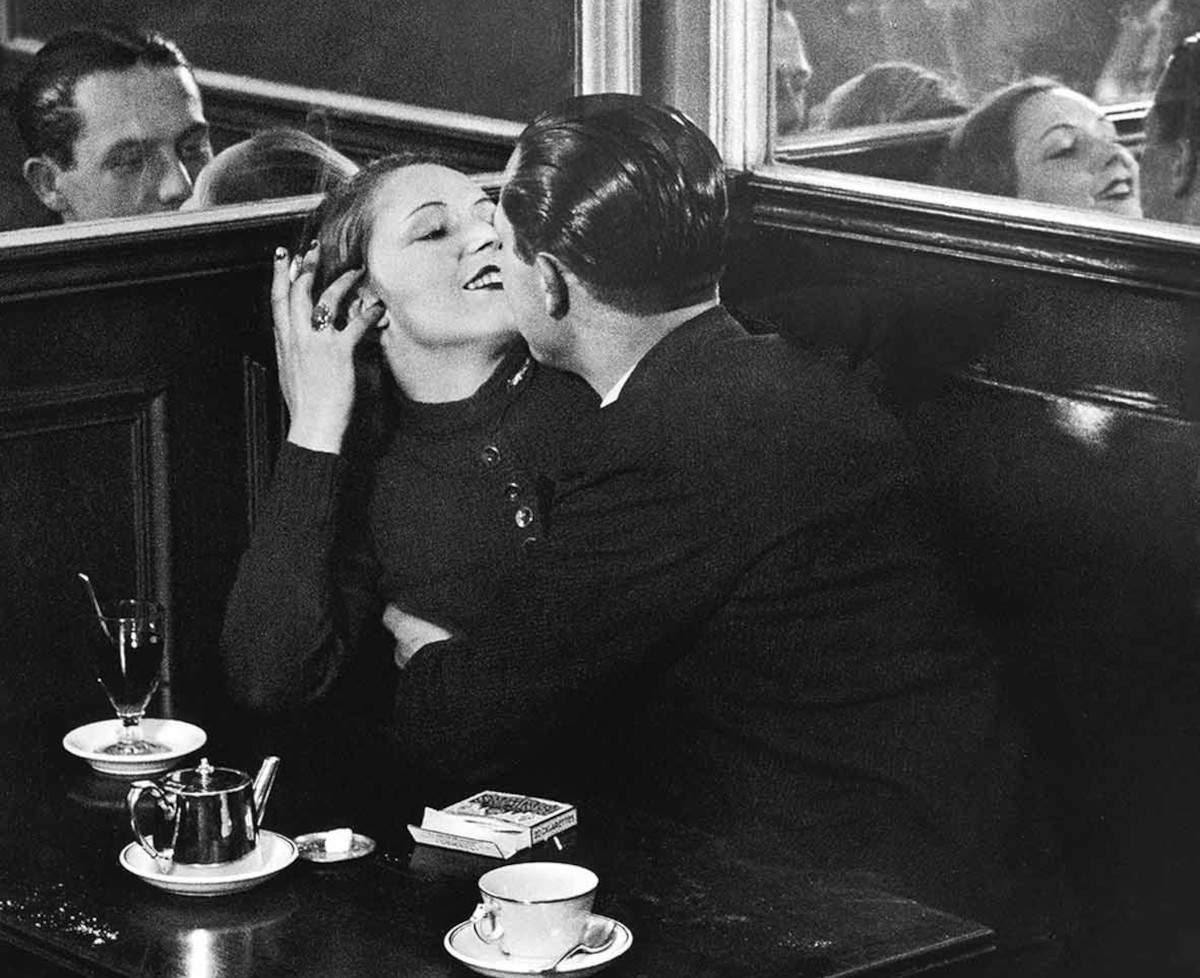The Paris of Brassai, among the great exponents of 20th century photography, on display in Bassano del Grappa
The Civic Museum of Bassano del Grappa is hosting from November 16, 2024 to April 21, 2025 the exhibition Brassaï. The Eye of Paris, curated by Philippe Ribeyrolles and Barbara Guidi, produced in collaboration with Silvana Editoriale and the Estate Brassaï Succession. On display are nearly two hundred vintage prints, as well as sculptures, documents and objects that belonged to the photographer, to present a never-before-seen look at the photographic work of Brassaï (Gyula Halász; Brașov, 1899 - Èze, 1984), with a special focus on the famous images devoted to Paris and his life.
Hungarian by birth but Parisian by adoption, Brassaï is one of the great exponents of twentieth-century photography. Painter, sculptor, cosmopolitan-trained writer, all-round intellectual, curious, acute and sensitive observer, Brassaï chose to devote himself primarily to photography around 1929, thus only after his final move to the French capital.
The Ville Lumière, with its places and its protagonists, is Brassaï’s inspirational muse: from the working-class neighborhoods to the city’s iconic monuments, from the world of fashion to portraits of his artist and intellectual friends, to graffiti and nightlife. “Photography is for Brassaï a mental act,” explains Barbara Guidi, director of the Civic Museums of Bassano del Grappa. “It is not only a way of looking at the world, but the means by which, or through which, to discover, understand and measure it. It is the instrument with which, to paraphrase Heidegger, Brassaï ’inhabits the world.’ It is with this spirit that he tackles the diurnal but especially nocturnal urban landscape of Paris, becoming a pioneer of photography ’in the absence of light,’ a practice then considered technically arduous and with which he marks an indelible page in the history of this art: as Diane Arbus said to her students, ’in Brassaï there is the very substance of darkness.”
Also extraordinary is the collection of images portraying the protagonists of those memorable years: writers, artists, musicians, fashion and entertainment icons, without forgetting the most humble figures, such as street vendors and Halles workers. Together, these subjects create a choral fresco of extraordinary poetry. During his walks, Brassaï did not limit himself to immortalizing landscapes or architectural vistas, but pushed into more intimate and intimate settings, places where society met and indulged in entertainment.
His proximity to the Surrealist movement and his friendship with prominent artists and writers such as Dalí, Matisse, Prévert, and Picasso opened wide the doors of intellectual circles, allowing him to participate in the unique cultural fervor that animated Paris in that unrepeatable period.
A multifaceted genius: he tried his hand at drawing, painting, sculpture, but also at writing; but Brassaï found in photography the perfect medium with which to confront reality. For him, the lens is a filter that gives him the ability to purify the world around him of conventions and customs, transforming even the most banal object into something surprising: “If everything can become banal, everything can become wonderful again: what is the banal if not the wonderful impoverished by habit?” the artist claimed.
His most famous images, such as the Paris by Night series and the photographs that inspired Surrealism and those from the Graffiti series that foreshadowed the poetics of Informal and Art Brut, accompanied by a selection of sculptures, a tapestry, documents and objects belonging to theartist, will be articulated in an exhibition of ten thematic sections that will immerse the public in the sophisticated and mysterious atmospheres of the French capital in the first half of the 20th century, a destination for artists and intellectuals.
“The exhibition Brassaï. The Eye of Paris offers a unique opportunity to learn as much about the masterful work of one of the most important artists of the last century as it does to take a real journey through time and space, immersing oneself in the most authentic atmospheres of Paris in the first half of the twentieth century,” says Giada Pontarollo, Bassano del Grappa’s Councillor for Culture. “After its debut in the prestigious venue of Palazzo Reale in Milan, but completely redesigned in its itinerary and narrative, and with the presence of previously unseen works, the exhibition now finds in our Civic Museum, already a point of reference for important photographic exhibitions of international importance, the favorite place to allow the general public to approach and delve into a new, important chapter in the history of photography through the work of one of its greatest protagonists.”
The exhibition will also be accompanied by the publication of the same name in Italian and English edited by Philippe Ribeyrolles, scholar as well as grandson of the great photographer, and by a rich educational offer designed for all types of visitors. Among the scheduled activities is a special workshop organized in collaboration with the Liceo Artistico “Michele Fanoli” of Cittadella, divided into four appointments led by Professor Dario Antonini, which will allow the public to try their hand at the art of printing on photographic paper in the darkroom and freely visit the exhibition Brassaï. The Eye of Paris. The appointments, lasting about 2 hours, will take place at 3:30 p.m. on Saturdays Jan. 18, Feb. 15, March 22 and April 5. At the end of the activity each participant will be able to take home the image made as a memento of the exhibition. Reservations will be available starting in December. .
“We are presenting in the exhibition spaces of the Civic Museum the work of one of the greatest photographers of all time,” says Nicola Ignazio Finco, mayor of Bassano del Grappa, “who knew how to tell the story of Paris in the first half of the 20th century like few others, delivering us images that still today constitute indispensable visual documents for those who want to know and study the French capital in the years between the two world wars. Images that still today, almost a century after they were made, retain intact all the force and immediacy of true documents of lived and deeply participated life.”
For info: www.museibassano.it

 |
| The Paris of Brassai, among the great exponents of 20th century photography, on display in Bassano del Grappa |
Warning: the translation into English of the original Italian article was created using automatic tools. We undertake to review all articles, but we do not guarantee the total absence of inaccuracies in the translation due to the program. You can find the original by clicking on the ITA button. If you find any mistake,please contact us.




























